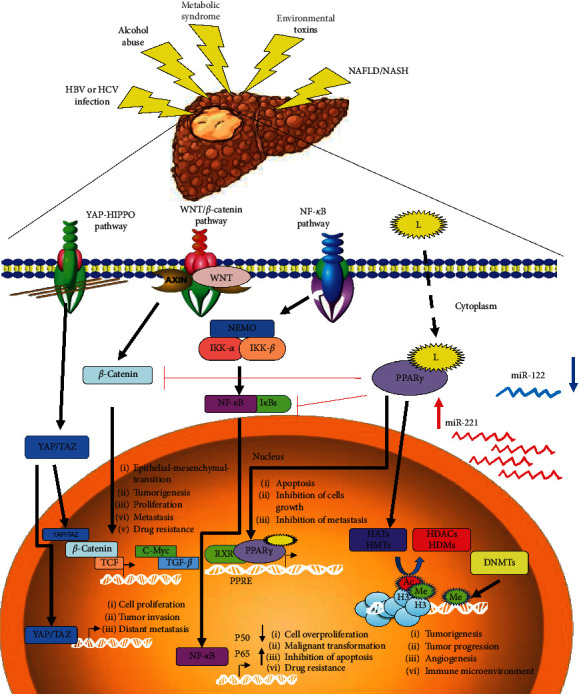Figure 1.

Main mechanisms involved in the development of hepatocarcinoma. The chronic exposure of hepatoxic agents causes the activation of the signaling pathways. YAZ-HIPPO receptors regulate the YAZ/TAZ transcriptional dimer genes involved in increased cell proliferation, mesenchymal epithelial transition, and metastasis. On the other hand, WNT/AXIN regulates the translocation of β-catenin to the nucleus, forming the YAZ/TAZ-β-catenin-TCF trimer activating profibrotic factors such as TGF-β and proliferative factors such as C-Myc, contributing to tumorigenesis and metastasis and inducing resistance to anticancer drugs. Similarly, NF−κB signaling pathway and the dimers IKK-α and IKK-β induce differential translocation of NF−κB P50/P65; on the one hand, an increase of P65 is induced to the nucleus while p50 is not translocated, causing an increase in cell proliferation, inhibition of apoptosis, transformation of malignant cells, and contributing to drug resistance. Finally, PPARγ bound to its ligands has a dual effect, inhibiting the signaling pathway of β-catenin and NF-κB, but by binding to the PPRE region it can increase the expression of genes involved in apoptosis, inhibition of cell proliferation, and metastasis. Acetylation and methylation of histones, regulated by the HATs/HDACs and HMTs/HDMs balance and DNA methylation regulated by DNMT1 activity, are the main epigenetic marks associated with tumorigenesis.
